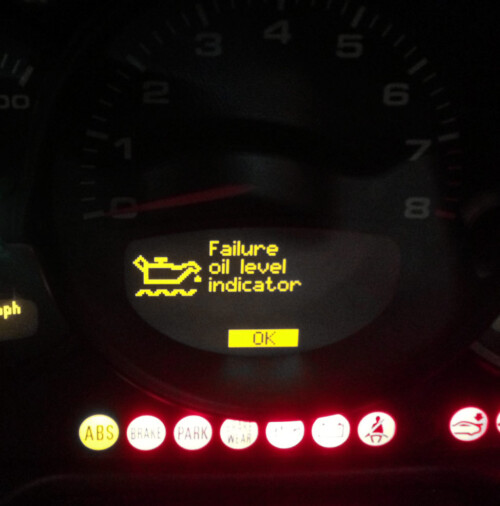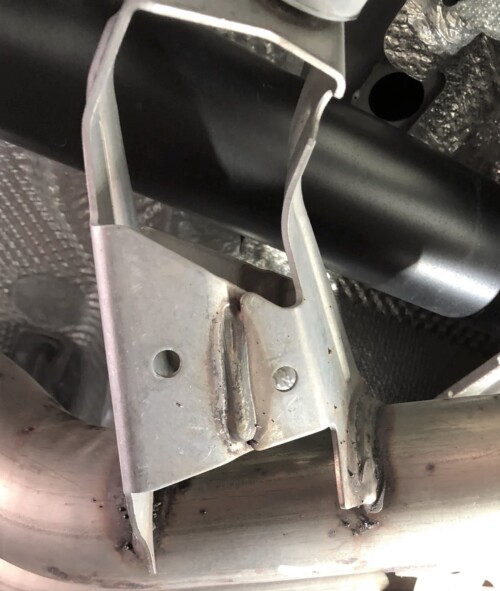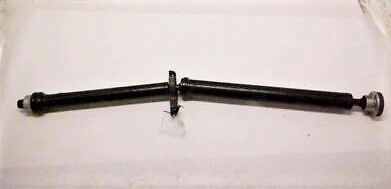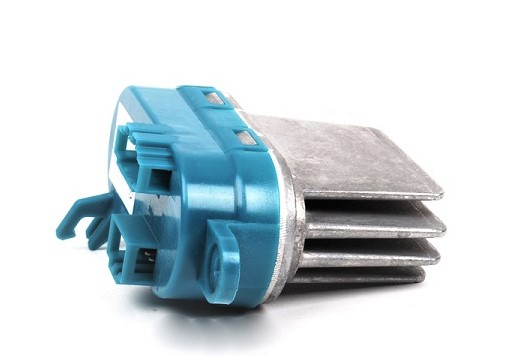Porsche Macan Common Problems
Common Reliability or Mechanical Problems Diagnosed on the Porsche Macan
 All You Need to Know About Porsche Macan Common Problems, Reliability, and Mechanical Issues
All You Need to Know About Porsche Macan Common Problems, Reliability, and Mechanical Issues
Listed below are Porsche Macan common mechanical problems with their likely resolutions. These are the most frequent Macan problems and mechanical issues for the 2016 through 2024 model years that were diagnosed by repair shops.
 What to do if You See Warning Lights, Messages, or Symbols on Your Porsche Macan Dashboard
What to do if You See Warning Lights, Messages, or Symbols on Your Porsche Macan Dashboard
Often a Porsche Macan common problem or mechanical issue will be associated with a dashboard warning light, message, or symbol. Be aware, there are more problems than there are warning lights or symbols and often the lights and messages are not always that clear. In our Dashboard Warning Lights, Messages, and Symbols section, we recommended what action to take when you see a warning on your Porsche dashboard.
Maintenance Won’t Solve Porsche Macan Problems
Maintenance rarely solves a problem. However, neglecting maintenance can cause issues – check your last service update with our recommended Macan maintenance schedules.
 Understanding Macan Diagnostic Trouble Codes
Understanding Macan Diagnostic Trouble Codes
Check engine light? Have you scanned your Macan and are now not sure what to make of those OBD codes? Our article on how to interpret and make sense of those fault codes may help. The following sections identify common problems through symptoms. If you have scanned your Porsche OBD2 system and have identified fault codes, go to our Porsche powertrain fault code page to get additional fault code descriptions.
Can’t Find An Answer Below? – Contact Us For Help
If your Cayenne has mechanical issues that don’t appear here, simply drop us an email via the forms or pop-up contact and we’ll do our best to share a solution with you.
Porsche Macan Reliability
The Porsche Macan is a very dependable vehicle and is rated highly by industry watchdogs like JD Power. Good maintenance can make all the difference when it comes to reliability. Performing regular maintenance with a Porsche specialist and understanding the wear on your Macan can help to avoid the common pitfalls.
The fact the car is a fine tuned Porsche can often lead to what would normally be deemed expensive repairs when compared to a domestic pickup truck or SUV. You’re driving a Porsche, so the reliability and repair cost comparison is invalid in our opinion! Later versions can experience PDK transmission issues but these issues can be avoided with care and easily repaired. In general, the Macan has no scary common issues that should ever stop you owning and enjoying one.
Clicking on a heading below gives you more detail.
Porsche Macan Common Problems by Symptom – S | GTS | Turbo
Engine
Oil Level High or Low - Topping Off Oil Level
Symptoms: Warning Message Oil Level Too Low or High
The Porsche Macan has experienced issues with the oil level sensor reporting incorrect oil levels. This was not helped by the publishing of wrong oil capacities at the launch of the Macan.
If you experience an oil level too high or too low message, be careful. First, there is no dipstick – brilliant idea most of the German car manufacturers have implemented. The oil level is measured electronically for accuracy. This is awesome, assuming the electronic measurement is accurate or is at the very least telling you the truth. There is no manual backup of the tried and trusted dipstick – so did you overfill or under fill? Or do you have a faulty sensor?
You have to be sure of which one before you take action. The only way to be sure is confirm the amount of oil in the engine by draining and measuring. We’ve experienced an oil reading that went down when we added a quart! Don’t be surprised if the oil level sensor is not telling the truth but, make sure you are certain that the oil level is correct before ignoring the sensor and replacing it.
Macan Oil Top Off
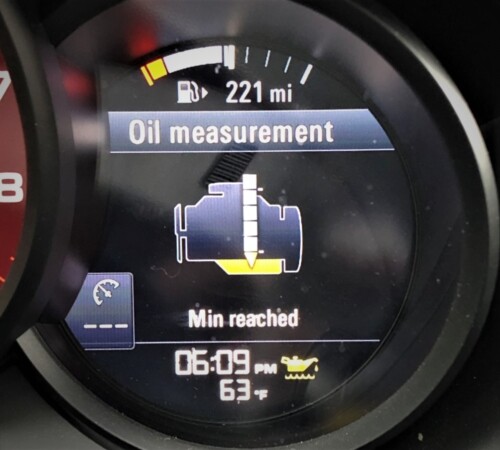 The Porsche engine will naturally consume oil while you drive. Different driving styles and conditions will cause oil consumption to change. With the extended mileage between oil changes that manufacturers have opted for, it’s very likely the car will call for additional oil between scheduled service intervals. Most independent shops consider the extended mileage range between oil changes too extreme and simply a marketing gimmick.
The Porsche engine will naturally consume oil while you drive. Different driving styles and conditions will cause oil consumption to change. With the extended mileage between oil changes that manufacturers have opted for, it’s very likely the car will call for additional oil between scheduled service intervals. Most independent shops consider the extended mileage range between oil changes too extreme and simply a marketing gimmick.
If your Macan calls for additional oil, here’s what to do:
- Ideally, the engine should be at operating temperature
- The difference between the minimum and maximum reading is approx. 1 quart
- Do not add more than 1 quart at a time
- Remeasure the oil level after each quart added
- After adding a quart, drive the car for 5 to 10 mins before rechecking the level
- Oil reading is not instant and requires a drive cycle
Fault Oil Pressure Monitoring
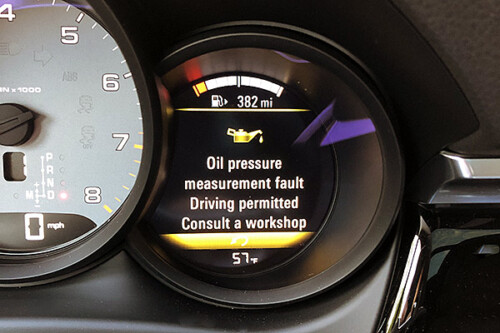 Symptoms: Warning Message – Oil Pressure Monitoring Drive on Poss. Visit Workshop.
Symptoms: Warning Message – Oil Pressure Monitoring Drive on Poss. Visit Workshop.
Macan owners can experience this message when driving. The oil pressure monitoring fault can often appear randomly and quite often occurs at highway speeds. Around town, the message is less likely to appear.
Oil pressure warnings can be scary. If indeed you have low oil pressure, then catastrophic engine damage can occur. So, it’s best not to ignore this and to quickly investigate the cause. The question here is related to whether the message is genuine e.g. a mechanical pressure fault or an electrical anomaly.
We recommend you visit a professional Porsche repair shop to determine the exact cause of this message before making any assumptions.
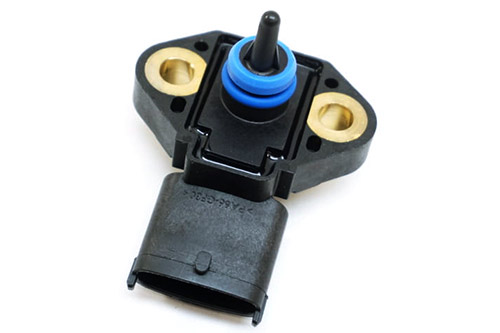 We are aware of Macan owners who have had to replace oil pumps and oil pressure relief valves, however, the likely cause of this issue is related to an electrical failure of the oil pressure sensor.
We are aware of Macan owners who have had to replace oil pumps and oil pressure relief valves, however, the likely cause of this issue is related to an electrical failure of the oil pressure sensor.
Oil Pressure Sensor Failure
The sensor or wiring leading to the sensor located on the front of the engine, will commonly fail an electrical test. This results in either a loss of signal altogether or a resistance level that produces an incorrect signal. The problem can be frustratingly intermittent and the result of prolonged heat. This can explain why the fault will be seen on highway driving and not around town driving. The issue does not set a fault but merely records an event.
So, when you get to the shop without the message the problem is not there! Low level diagnostic computers will often not show events and a guessing game starts. Don’t let this happen. Porsche repair shops we recommend in your local area will have the tools necessary to read the events and diagnose this problem correctly.
High Oil Consumption
The problem of high oil consumption affected a good number of engines in the early Macan. Later base model 2.0L engines also suffer from this problem. Typically, this resulted in the consumption of a quart of oil every 1K miles driven. In the most severe cases the engine was replaced under warranty. Low mileage versions of Check the soot on the tail pipes and the average fuel consumption shown on the PCM. More soot and increased fuel consumption may be signs of oil consumption. Changing oil can help – petroleum-based synthetic oils are more likely to be consumed and degrade quickly. Switching to a renewable oil may help with oil consumption.
Oil Leaks - Timing Case Cover
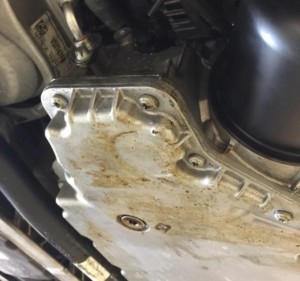 Symptoms: Oil Leaking Down on to Oil Pan
Symptoms: Oil Leaking Down on to Oil Pan
Porsche Macan V6 owners commonly experienced the now infamous oil leak from the timing case cover seal. Oil leaks can occur in any of the seals on the engine and the resultant oil leaking always heads south towards the oil pan. So, it’s important to identify the true source of the leak, before jumping to conclusions.
The timing case cover issue originally stemmed from defective bolts used during engine production and it was subsequently addressed in later models. Even so, this problem is still a recurring issue today.
Bolts holding the timing case cover to the engine break and cause enough of a gap for oil to leak out while the engine is running.
Because of the location of the timing case cover, the original recommended way to resolve the leak was to first remove the engine! However, with experience, simply replacing the broken bolts with the engine in place, will typically seal the oil leak and reduces the cost of completing this job dramatically. Of course, that assumes you can actually remove the portion of the broken bolts still in the engine. That can be difficult and requires patience!
Replacing the broken bolts on the timing cover normally solves the oil leak.
Other Engine Oil Leaks
The Porsche Macan engines are reliable and not typically prone to excessive oil leaks. The most commonly seen leaks are:
- Valve Cover – Harden, aged sealant – can leak onto the exhaust manifold, causing burning oil smell.
- Camshaft Adjuster Solenoid Seals – Small O-rings leak oil down the front of the heads.
- Oil Separator – Fails internally and can leak or cause crankcase pressure issues leading to external leaks.
- Timing Chain Covers or Camshaft Housing Seals – Labor-intensive repair; leaks usually start as light seepage.
- Oil Filter Housing and Oil Cooler Seals – Common on both V6 and V8; seals flatten with heat and time.
- Rear Main Seal (RMS) – Seen on higher-mileage or neglected engines; oil drips between engine and transmission.
- Oil Pan Gasket – Usually only minor seepage.
- Timing Chain Cover or Front Main Seal – Common at ~80–100K miles.
- Turbo Oil Feed & Return Lines – Heat causes O-ring hardening and oil leaks onto turbos.
Carbon Build-Up - Rough idle, lack of power
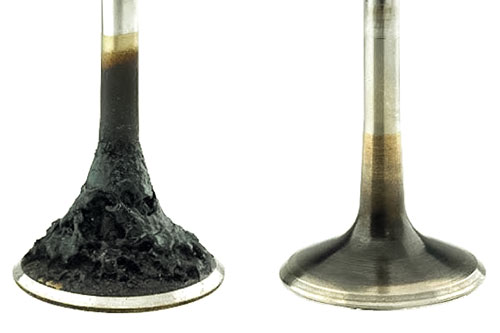 The engines in the Macan are subject to carbon buildup around the intake valves. This causes an intake air-flow restriction and subsequent rough running at idle speed, and a loss of power during acceleration. Typically, the problem is most noticeable between 60K and 80K miles.
The engines in the Macan are subject to carbon buildup around the intake valves. This causes an intake air-flow restriction and subsequent rough running at idle speed, and a loss of power during acceleration. Typically, the problem is most noticeable between 60K and 80K miles.
The good news is that removal of the carbon buildup is relatively straight forward. There are several ways this can be done from walnut shell blasting through chemical cleaning. Once completed, the runnability of the engine returns to a like new status.
Water Pump Leak and Thermostat Failure
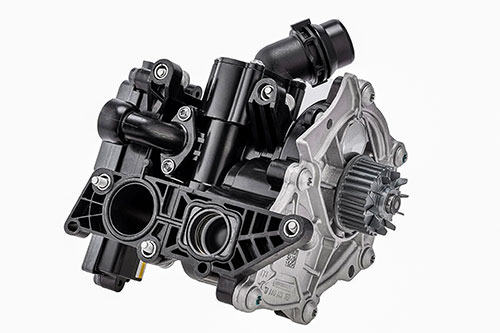 The Porsche Macan water pump is mounted on the front of the engine and uses a composite plastic housing with rubber shaft seals. Over time and with thermal cycling, the pump shaft seal begins to leak coolant. The plastic housing can also warp slightly over time, reducing sealing against the engine block and causing a leak that is more difficult to identify.
The Porsche Macan water pump is mounted on the front of the engine and uses a composite plastic housing with rubber shaft seals. Over time and with thermal cycling, the pump shaft seal begins to leak coolant. The plastic housing can also warp slightly over time, reducing sealing against the engine block and causing a leak that is more difficult to identify.
Water pump lifecycle in the Macan is often 60k – 90k miles depending on the type of driving. Signs of the failure include small coolant puddles under the front passenger side of the car, slow coolant loss with no obvious overheating, and pink or white residue around the pump body.
Thermostat Housing
Leaks and failure of the thermostat housing in the Macan is also common around the same mileage as the water pump. Best recommended practice is to replace the thermostat housing at the same time as the water pump assembly – this consolidates the labor cost making the dual repair more cost effective.
Fuel Leaks - Gas Smell - Recalls
Symptoms: Leaking Fuel, Gas Smell While Driving
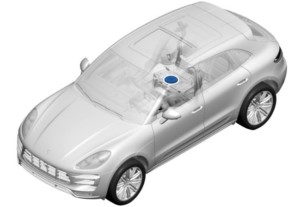 Porsche recalled the Macan in April 10, 2020. The recall pertains to a fuel leak that could potentially be hazardous and involves all models produced between 2015 and 2018. This is the third time a recall for the Macan has been issued. So far, each recall has been focused on different aspects of the fuel delivery system.
Porsche recalled the Macan in April 10, 2020. The recall pertains to a fuel leak that could potentially be hazardous and involves all models produced between 2015 and 2018. This is the third time a recall for the Macan has been issued. So far, each recall has been focused on different aspects of the fuel delivery system.
It’s clear that initial generations of vehicles such as the Macan tend to have issues that are subsequently fixed in revised models. Stating the obvious, the design of the fuel delivery system on the Macan clearly wasn’t up to par – recall three seems to confirm that.
If you smell gas while driving or suspect a fuel leak, have the problem checked for the recall work at your local dealer ASAP.
See also our news article on the Macan fuel system recall
No Start - Fuel Pump Failure - CEL - Random Multiple Misfire
Symptoms: No Start, Start and Die, CEL Random Multiple Misfires
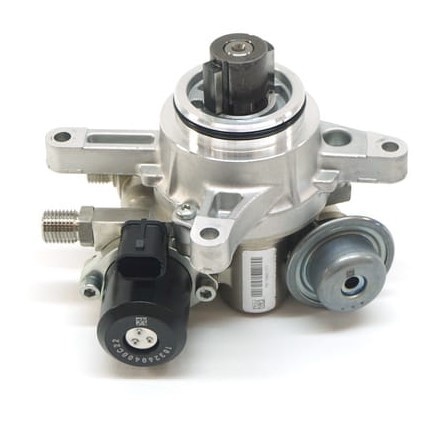 The Macan features two fuel pumps – a low pressure in-tank pump and a high pressure pump on the engine.
The Macan features two fuel pumps – a low pressure in-tank pump and a high pressure pump on the engine.
With direct injection (DFI) engines, the high pressure required to deliver fuel comes from a pump driven by the engine camshaft. A failure in the high pressure fuel pump has very similar symptoms to the failure of the in-tank pumps. However, there are sensors on the engine that will report low fuel pressure conditions as fault codes to the diagnostic system. Low pressure in the fuel system will usually begin as random multiple misfires and a loss of power under acceleration. This will set a check engine light condition on your dashboard.
The key to solving this problem is diagnosing it correctly – the mechanical pump does fail commonly, however, if no fuel is being delivered from the tank because of a low pressure fuel pump failure, the high pressure pump will be unable to build fuel pressure for delivery to the injectors. This might look like a high pressure fuel pump problem when it isn’t! A good repair shop can accurately diagnose this for you.
Check Engine Light - Misfire - Dead Cylinder - Coils, Plugs, etc.
Symptoms: CEL, Loss of Power, Misfire Under Load
There are multiple reasons why a check engine light can be set for misfires. A code scan can reveal which cylinder is misfiring but not usually exactly why.
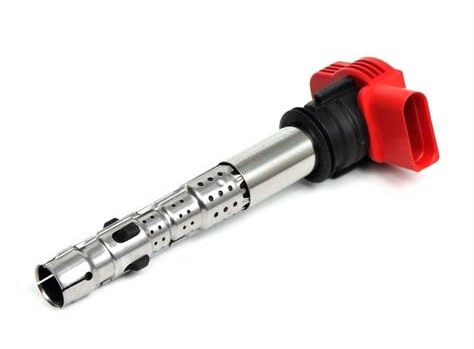 CEL – Misfire – Faulty Ignition Coil
CEL – Misfire – Faulty Ignition Coil
The ignition coils on the Porsche Macan have been updated a number of times. A single coil failure is typically a sign of more trouble to come from other coils. It’s usually best practice to update all the ignition coils if the problem is caused by age or mileage.
A failing coil typically stops any spark and sets a misfire code with a completely dead cylinder. This will cause rough running, especially at idle.
However, coils can also part fail, where a weak spark causes misfires to occur when the cylinder is loaded under acceleration. Resetting the cylinder and clearing the CEL fault will cause the engine to run well at idle but set the fault again when driven more aggressively.
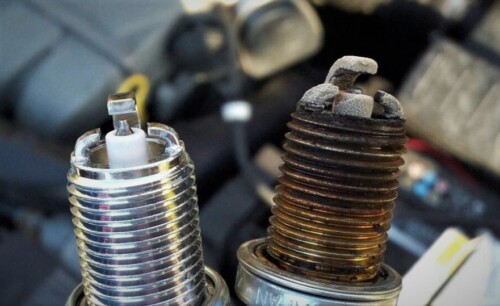 CEL – Misfire – Worn Spark Plugs
CEL – Misfire – Worn Spark Plugs
Service intervals between spark plug changes can seem rather long, considering the duty cycle required from a plug over a 30K mile period. Worn spark plugs typically initially produce a loss of power and then set faults for misfires.
A shortcut to finding out if you have a plug or coil problem is to identify the cylinder misfiring and swap the coil from the misfiring cylinder with a coil from a known good cylinder. If the misfire moves with the coil, you have a coil problem. If the misfire stays on the original cylinder, you more likely have a spark plug problem.
Turbo Rattle - Cold start rattle or deceleration
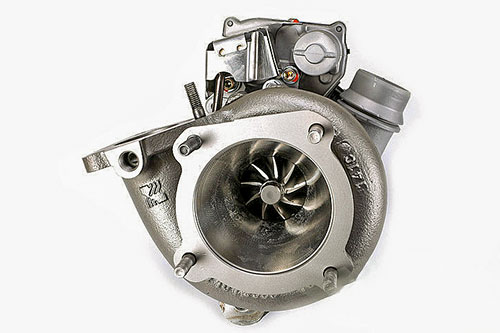 Some Macan engines experienced issues with turbo actuation. The turbo wastegate actuator can develop excess play and movement causing a metallic rattle sound. This is usually prevalent during cold start conditions but gets worse with age. The turbo was subsequently updated to eliminate this issue and many of the units replaced under warranty.
Some Macan engines experienced issues with turbo actuation. The turbo wastegate actuator can develop excess play and movement causing a metallic rattle sound. This is usually prevalent during cold start conditions but gets worse with age. The turbo was subsequently updated to eliminate this issue and many of the units replaced under warranty.
Engine Cooling System
Coolant Leaks - Coolant Pipes - Water Pump - Thermostat
Symptoms: Coolant Leaks – Steam From Under The Hood – Engine Overheating
A coolant leak can be deadly for any engine and especially on the Porsche Macan– overheating of the engine due to a loss of coolant very quickly does damage that could result in a total failure and an engine replacement being needed.
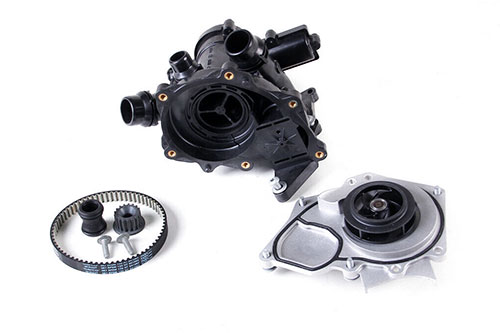 Water Pump Failure
Water Pump Failure
Water pumps and thermostats fail regularly. The water pump bearing that supports the drive shaft wears and consequently the shaft starts to wobble. This develops into a knocking noise and is often accompanied by a coolant leak on the front of the engine.
Vanes of the water pump are worn by the wobble and make the pump less efficient at pushing coolant through the engine. Typically, this will also show up initially as a continual rise in engine temperature at idle speed, although when driving the Macan, it may maintain a normal temperature level.
Water pump replacement on the Macan is straightforward with direct access to the pump from behind the front radiator. This is also the location of the thermostat, which also fails regularly and replacing both at the same time makes sense.
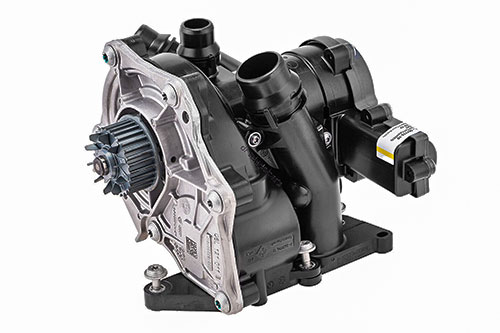 Thermostat Failure – Overheating
Thermostat Failure – Overheating
The Macan thermostat is electronically controlled and reports a fault when a failure occurs. A failed thermostat that is stuck open is not so bad, as the engine will typically run too cold. On the other hand, a thermostat that fails in the closed position, can quickly be very detrimental to the engine and overheating can occur rapidly.
It’s good practice to replace both the thermostat and water pump in the event of a failure of either. In addition, should a leak have occurred on the front of the engine, it’s important to check the condition of the drive belts and replace if necessary at the same time.
Water Pump and Thermostat Housing Leak
Later Macan models feature a complete assembly holding both the water pump and thermostat. This plastic assembly can often leak requiring the replacement of the whole assembly. Thankfully this is relatively cheap (less than $300) and includes a new thermostat and water pump.
Exhaust
Chirp, Squeal or Whistle Off Accelerator - Exhaust Rattle
Symptoms: Chirp, Squeal or Whistling Sound Off Accelerator or Rattle Under Acceleration
This is a fun issue on the earlier Macan. Rev the engine to about 2K rpm and let your foot off the gas. You’ll here what appears to be a belt chirp, whistling sound or rattle.
The sound is in fact a fractured or fatigued metal exhaust mount or a cracked mid pipe exhaust plate bracket. The noise can often be misdiagnosed as a belt chirp.
As the engine revs it torques from side to side and these brackets are twisted in the process. As they age, they crack and the metal rubs together causing the sound. This can also show up as an exhaust rattle while driving.
This is a simple fix – one of the brackets joining the two pipes can be removed and the other welded to solve the problem. The picture shows the welded bracket fixed.
Porsche updated the Macan with a revision to the exhaust downpipes that eliminates this problem – most of the time!
Transmission and All Wheel Drive
Transfer Case - Vibrations Under Acceleration or When Turning at Low Speed
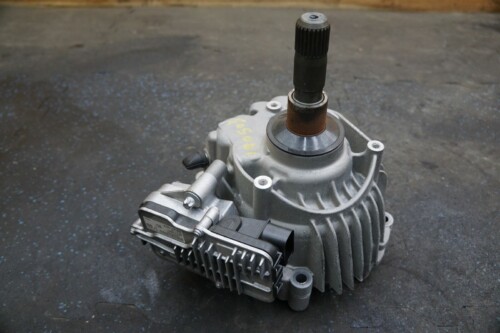 Symptoms: Vibration Under Acceleration or During Low Speed Tight Turns
Symptoms: Vibration Under Acceleration or During Low Speed Tight Turns
Many Macan owners have experienced vibrations or unsteady acceleration around the 25-35 mph. This is usually subtle initially, but gets steadily worse, especially when moving forward at low speed with the wheels turned tightly. Sometimes, this can also show up as jerking when the PDK is going through 2nd to 3rd gear changes and accelerating between 30-50mph.
The problem stems from the transfer case in the four-wheel drive system and is a regularly reported issue.
Transfer Case Problems
The transfer case directs the drive from the transmission to the front wheels and synchronizes the difference between the rotation of the front wheels. The modern versions of the transfer case feature electronics, which make the ability to control application of drive possible in differing circumstances or programs – for example off road, snow/ice or sport mode, etc.
Wear in the transfer case causes a mismatch between the intended wheel speeds during acceleration and the actual wheel speeds. This subsequently shows up as a vibration under acceleration or a jumping or skipping feeling at extreme steering lock.
Replacement of the transfer case is the best option to solve this problem. While the transfer case has been revised a number of times, this issue appears to continue to plague the Macan. Seemingly as a result, Porsche announced an extension to the warranty period covering the transfer case.
PDK Issues - Transmission Faults
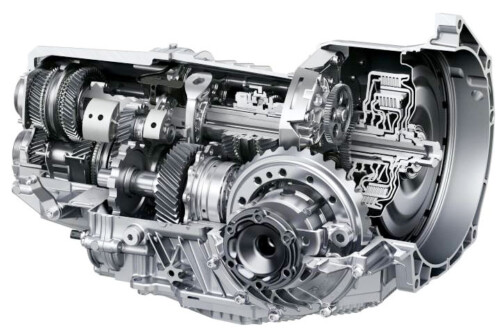 Symptoms: PDK Failure Light, Rough Gear Changes, Transmission Faults, Emergency Transmission Run Warning on Dash
Symptoms: PDK Failure Light, Rough Gear Changes, Transmission Faults, Emergency Transmission Run Warning on Dash
The Porsche-Doppelkupplungsgetriebe – which translates to Porsche double-clutch transmission or PDK (now that’s when you really need an acronym!) has been the subject of a number of failures. Porsche Macan owners have experienced failure of the PDK transmission. For more information, see our page dedicated to PDK failures, symptoms, and faults with potential resolutions.
The PDK is an automated manual transmission. Two units matched together – a manual transmission rear section and automated dual clutch front section. The manual transmission rear section is very solid and reliable. Most issues occur with the electronic and hydraulically controlled clutch section at the front of the transmission. Physically, the PDK is a ZF transmission unit that has been around for a number of years. VAG took multiple versions of the transmission and personalized them for their various car ranges. Porsche adapted the software and labeled their version PDK.
There are a number of ways in which the PDK in the Macan can fail. Most show up as a collection of warning lights on the dash and an eventual refusal to do anything. The only viable solution for most people is the replace the PDK – this is very expensive. However, much of the need for replacement of the PDK comes from a lack of understanding, unavailable parts and an unwillingness to dig deep.
Components and Failures
Transmission Control Module – TCM
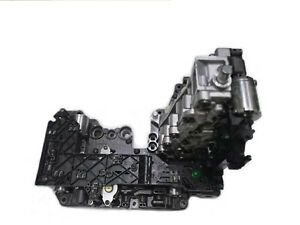 The connection to the car and communication of instructions to the transmission, come from an external module called a transmission Control Module (TCM). While this rarely has issues, it can become confused and has been the subject of a number of software revisions. Re-flashing the TCM doesn’t usually solve problems, but ensuring you have the latest software revision can’t hurt. This is where diagnostic faults are stored.
The connection to the car and communication of instructions to the transmission, come from an external module called a transmission Control Module (TCM). While this rarely has issues, it can become confused and has been the subject of a number of software revisions. Re-flashing the TCM doesn’t usually solve problems, but ensuring you have the latest software revision can’t hurt. This is where diagnostic faults are stored.
Mechatronic Unit – Valve Body
The TCM sends instruction to the Mechatronic unit or valve body inside the transmission. The Mechatronic unit is a complex series of electronics, hydraulic valves and sensors. These devices are managed by a control module attached to the Mechatronic unit. This is the system which enables gear changes and controls the transmission functionality.
Problems with the Mechatronic unit vary, but commonly include failure to select gears, rough gears changes, etc. The physical components of the transmission are robust, so this unit is often the most economical place to start for most issues.
Internal Sensors
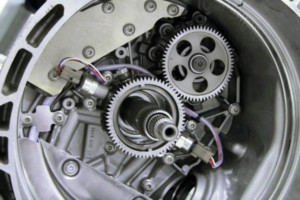 Connected to the Mechatronic unit are a number of sensors throughout the transmission. These determine the operating conditions within the transmission. For example, the temperature of the fluid, the rotational output speed, hydraulic clutch pressure and movement of gears selectors. Failure of these sensors is very common. Early on, Porsche routinely replaced the wiring and trans temp sensor in most of the PDKs.
Connected to the Mechatronic unit are a number of sensors throughout the transmission. These determine the operating conditions within the transmission. For example, the temperature of the fluid, the rotational output speed, hydraulic clutch pressure and movement of gears selectors. Failure of these sensors is very common. Early on, Porsche routinely replaced the wiring and trans temp sensor in most of the PDKs.
However, the problem did not go away and has re-occurred on the same transmissions further down the road. The temp sensor problem can show up on almost any model with a PDK. See our PDK problems page for more detail on the sensor problems.
Clutch Pack
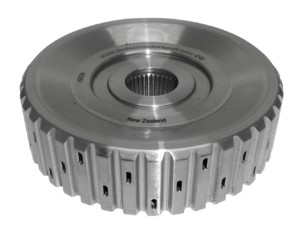 The clutch pack has proven to be very robust and generally does not fail with normal use. Over extended mileage this will become a wear component that will need to be replaced. The failures of the clutch that have occurred, are usually on performance enhanced engines delivering too much torque for the clutch plates. At higher torques, the clutches slip resulting in highly accelerated wear and early failure.
The clutch pack has proven to be very robust and generally does not fail with normal use. Over extended mileage this will become a wear component that will need to be replaced. The failures of the clutch that have occurred, are usually on performance enhanced engines delivering too much torque for the clutch plates. At higher torques, the clutches slip resulting in highly accelerated wear and early failure.
The PDK transmissions in the later cars are very complex and the technology involved is a closely guarded secret. Technicians at Porsche are not required to dissect the transmission and make repairs. They will replace the Mechatronic unit, but often they just replace the transmission as a whole.
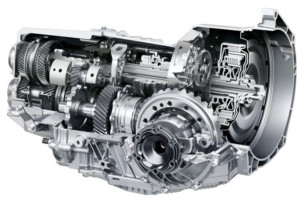 Don’t Replace Your Porsche PDK Transmission – It Can Easily and Economically Be Repaired
Don’t Replace Your Porsche PDK Transmission – It Can Easily and Economically Be Repaired
Expert Porsche PDK Transmission Repair Service
The good news is the Porsche PDK transmission is fully repairable for a fraction of the cost of replacement. And in more good news, repairs of the PDK transmission have led to expert knowledge to be able to recommend additional preventative maintenance that can help avoid the common issues that arise with the PDK.
Recommended Porsche PDK Repair Specialist
We have partnered with MC Squared Autosport and highly recommend their Porsche PDK transmission repair service.
Clunking Sound on Acceleration - Drive Shaft Support Bearing Failure
Symptoms: Clunking or Banging Down Center of Car Under Acceleration
In a similar way to the original Porsche Cayenne, the Macan experiences a consistent failure to the center support bearing in the driveshaft – also known as prop shaft or carden shaft etc. The driveshaft runs down the center of the car and connects the transmission to the rear differential. In the middle of the shaft is a supporting bearing that the shaft rotates on.
When the center support bearing fails, the shaft wobbles, vibrates and thumps during acceleration. You’d be hard pressed to find an early Cayenne that hasn’t experienced this problem and it seems that Porsche did not learn that lesson completely. Ten years later the same problem exists on the Macan.
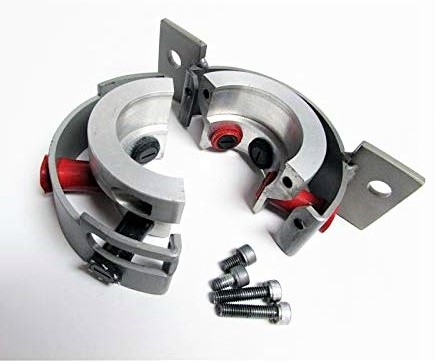
Porsche’s replacement for the bearing wasn’t much better than the original. If the experience associated with the early Cayenne is anything to go by, replacing the driveshaft with the same product from Porsche leads to a subsequent recurrence of the problem some more miles down the road.
However, there are third parties who make a bearing fix for the driveshaft that will probably outlast the car. The aftermarket solution does not require the driveshaft to be removed to complete the job and usually will save you money on the repair.
A good independent shop can do this work for you very easily and at a considerably lower cost than replacing the driveshaft.
Electrical System Faults
Porsche Communication Management (PCM) Issues
Symptoms: Macan PCM unit restarting every 2-3 minutes, map not loading, loads in wrong language, loads just the Porsche logo screen, turns on and off randomly etc.
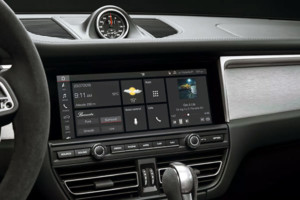 Who hasn’t had an issue with the PCM system in their Macan?
Who hasn’t had an issue with the PCM system in their Macan?
Many Macan owners have reported all sorts of random and weird behavior from the PCM system and in particular updates seem to often be the main offender. Many are convinced that various software updates resulted in unstable working conditions. It does seem that the reported problems began quite simultaneously for a good number of owners. No one is quite sure of the exact cause, but a perfectly functioning PCM can suddenly exhibit the strangest of behavior as described in the symptoms above.
Defining the Issue with the Macan PCM
The problems with the PCM can really be categorized in to two groups.
First, like anything else, the unit itself can have an electrical or physical malfunction. Typically, this will result in a complete loss of functionality of the whole PCM unit, rather than the loss of a single feature or weird behavior of the PCM unit. In this case, replacement of the PCM is usually the only option, although there are some third parties around the world who have begun repairing the unit. Not an option for the dealers – they have to replace it and the cost is quite high.
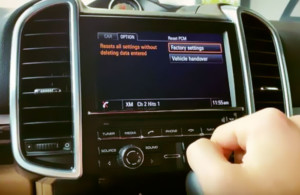 For the second set of Panamera PCM problems that generally fall into the strange behavior category, an old-fashioned Ctrl Alt Del seems to resolve most issues. Some will remember when it was necessary to do this a couple of times a day to a Windows PC, but in this instance, the PCM usually recovers well to an initial start point and then functions normally.
For the second set of Panamera PCM problems that generally fall into the strange behavior category, an old-fashioned Ctrl Alt Del seems to resolve most issues. Some will remember when it was necessary to do this a couple of times a day to a Windows PC, but in this instance, the PCM usually recovers well to an initial start point and then functions normally.
Resetting The PCM System in Your Macan
It is important to note that what you are doing here is resetting the system back to the original factory defaults prior to your Macan being delivered to its first customer. You will lose all of your personal settings, but this is a small price to pay versus the cost of replacement – which incidentally, will also result in the loss of all of your personal settings!
The following video explains how to perform a reset of the PCM:
Water Leaks - Blocked Drains and Electrical System Damage
Symptoms: Electrical System Failures – Strange Electronic Behavior – Water in The Cabin or Trunk
Part of the annual maintenance schedule for Porsche vehicles is the clearing of roof drains. However, this has been overlooked and not carried out in many circumstances. The resultant damage from blocked roof drains can be extensive.
Porsche Sunroof Drains
Your Macan has 4 drains that take water away from the roof and send it through a tube to an exit point low on the bodywork. These drains can become blocked with debris from leaves, dust and general road dirt. They can also fail or split. Once the drain is blocked, water backs up in the pipe until the pipe gives way or it finds another way out. Unfortunately, the exit point for the water typically seems to be close to sensitive electronic equipment.
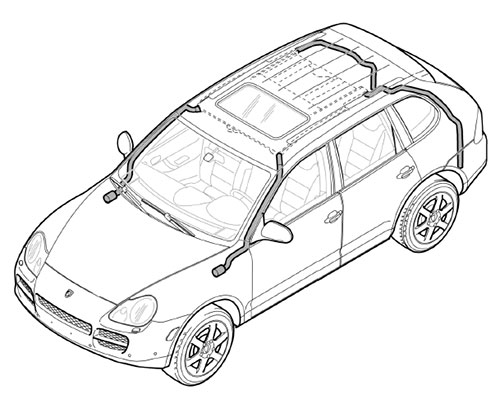 Finding Water Leaks in Your Macan
Finding Water Leaks in Your Macan
If you discover water in the trunk or inside the passenger cabin by the front windshield, blocked or failed roof drains are normally the root cause. The water can very quickly enter the wiring harness, electrical connectors, and control modules near the leak. The replacement of control modules is expensive and often requires additional security programming. Water entering the trunk can also damage the trunk mechanism, exterior lighting, and the trunk interior.
Prevention of the Water Leak Problem
Porsche has recently settled a class action lawsuit filed for the water leak problem. You may benefit from that.
Back-Up Camera Issues
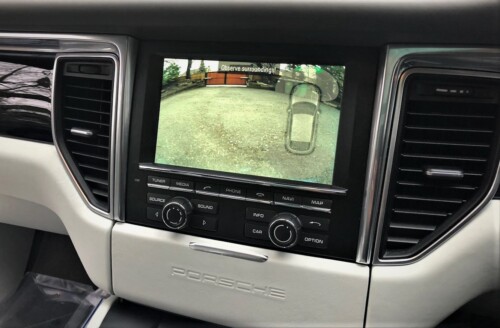 Symptoms: Back-up Camera is Blurry, Out of Focus
Symptoms: Back-up Camera is Blurry, Out of Focus
The Macan back-up camera has sparked a lot of debate. Many drivers have complained that the image shown by the camera is extremely out of focus and actually hinders the driver’s ability to back into a parking space.
The debate online rages about whether this is a major issue or simply a minor oversight. So, if you experience this problem with your Macan, there are limited options.
First, Porsche upgraded the camera in later versions of the car. If you have an early version with camera problems, only an upgrade will fix the issue. Secondly, there are third-party companies that have cameras to install using the Porsche system. These are a little less expensive and generally solve the problem instantly.
If you just can’t back-up without the camera, check with a local repair shop for the third party solutions.
HVAC System
Noisy or No Function from HVAC Fan - Single Speed Fan
Symptoms: HVAC Fan Stops Working, Single Speed Only or Noisy Operation
A common problem in the Porsche Macan is a condition where the climate control fan suddenly starts working intermittently, or only at one speed, or not at all. It may also become excessively noisy.
Blower Motor Regulator
The variation in the speed of the HVAC blower fan is controlled by the blower motor regulator. Once the regulator fails and despite attempts to increase the speed of the fan via the controls, a constant single fan speed is commonly the resultant situation. Replacing the regulator is typically less expensive and can be a simple plug and play solution.
Blower Motor Failure
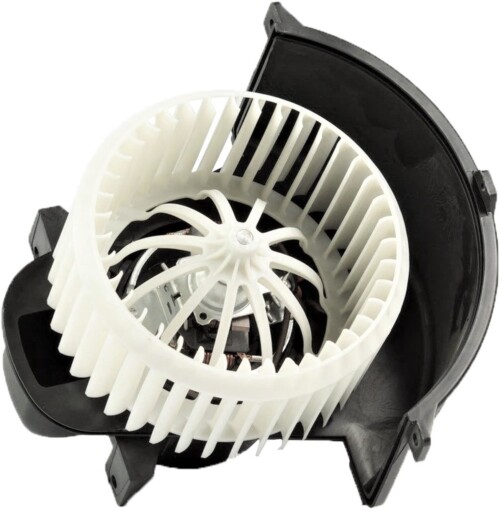 When the HVAC blower fan has no speed at all or is noisy, it’s most likely that the blower motor itself may have failed. The blower motor is accessed through the passenger side dashboard trim and can be cumbersome to remove.
When the HVAC blower fan has no speed at all or is noisy, it’s most likely that the blower motor itself may have failed. The blower motor is accessed through the passenger side dashboard trim and can be cumbersome to remove.
It makes sense to replace the fan and the regulator at the same time. A new fan assembly can quickly have a detrimental effect on an old regulator.
AC System Blows Warm Air
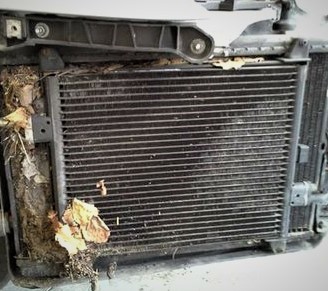 Symptoms: Warm Air From AC or Loss of Refrigerant Over Time
Symptoms: Warm Air From AC or Loss of Refrigerant Over Time
If your AC system blows warm air, the most common issue is a lack of refrigerant. Over time the refrigerant from the AC system will find its way out of the hoses and joints. If, however, you refill the system and sometime later the system is again low on refrigerant, there is clearly a larger than normal leak.
Leaks can occur at any section joint or hose, however, one of the most common and missed places for the leak is at the lower corner of the front condensers.
Debris from leaves and road dirt can build up tucked in the extreme lower corner of the condensers of the Macan. The debris can hold moisture and degrade the aluminum to point were a hole can appear. This is almost impossible to see or clean out without the bumper being removed.
The refrigerant leak often goes undetected even to a sniffer without the debris being cleaned away. Check this thoroughly before making any other assumptions. The AC compressor for example, rarely has issues and a low refrigerant situation can prevent the compressor from engaging.
Brakes - PSM Faults
PSM Failure Message
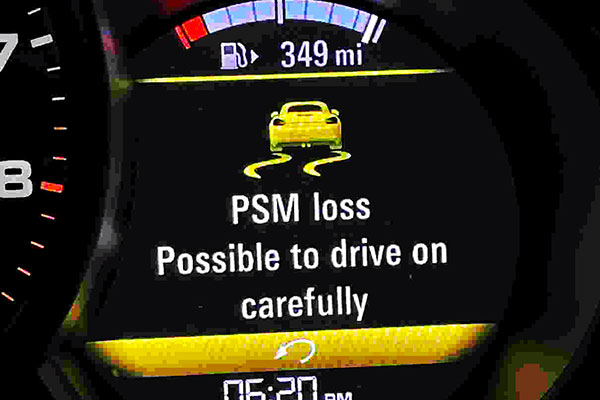 Here’s What to do When You See PSM Failure on Your Porsche Dashboard
Here’s What to do When You See PSM Failure on Your Porsche Dashboard
PSM failure can be a common issue on the Macan, however, because the system is so interconnected, the message PSM failure can be deceptive. The PSM per se has not itself failed. The likelihood is a single sensor or component connected to the system is broken. The interconnection of the systems can result in the reporting of multiple faults and cause significant confusion to the untrained. Commonly a single sensor failure will report multiple faults in various systems. Proper diagnosis of the root cause will save you money versus part replacement guess work.
Macan models had a batch of faulty wheel speed sensors that often caused this issue. We recommend the replacement of all four wheel speed sensors if this happens.
Brake Booster Fault - Turbo Models
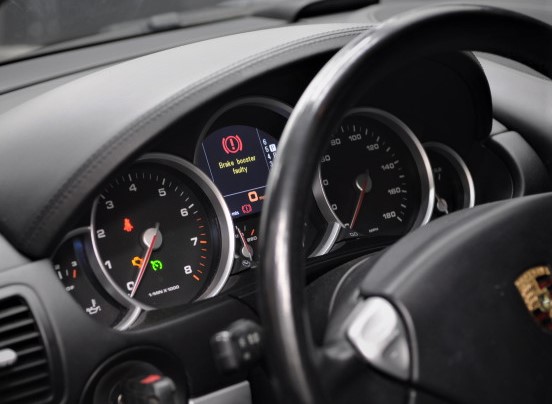 Symptoms: Brake Booster Fault – Dash Message, Harder Brake Pedal
Symptoms: Brake Booster Fault – Dash Message, Harder Brake Pedal
The Porsche Macan features a complex engine vacuum system that is driven by a pump. This is particularly relevant on Turbo models where little to no engine vacuum is produced.
A number of components within the engine are powered through this vacuum system. The most common fault set through a failure in this system is that of the brake booster fault.
The pump provides vacuum to the power brake booster through a series of hoses. The level of vacuum is monitored through a sensor and a drop in vacuum can cause the sensor to report the fault to the dashboard. Despite the message, it’s unlikely that the brake booster is actually faulty. Typically the problem lies in a lack of vacuum to the booster as a result of a crack in one of the vacuum lines.
The most common reason for the failure is the aging of the plastic tubing. Over time, the hard plastic tubing heats and cools rapidly. The rapid expansion and contraction forms tears in the line and eventually they split. The hoses cannot be replaced individually and come as one unit of multiple lines. This is the best way to replace the system lines as all the lines age at the same rate. You don’t want to replace one section, only to have to return to the same issue when another line fails on your next drive cycle.
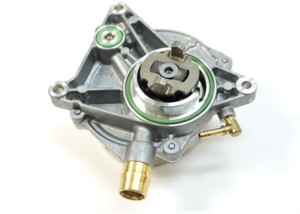 Assuming all the lines are in good shape and hold vacuum, then the problem may well lie with either the vacuum pump itself or the sensor. These are straight forward to replace and are a common wear item. A complete lack of vacuum should be fairly obvious to diagnose.
Assuming all the lines are in good shape and hold vacuum, then the problem may well lie with either the vacuum pump itself or the sensor. These are straight forward to replace and are a common wear item. A complete lack of vacuum should be fairly obvious to diagnose.
Fault Electric Parking Brake Message
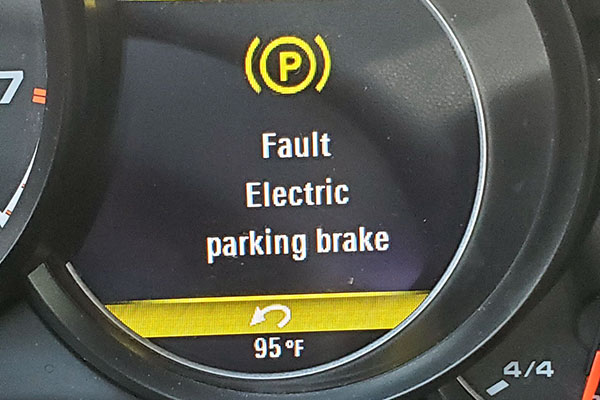 This message relates to the ability for the electrical system to operate the parking brake. The parking brake is applied via electric motors.
This message relates to the ability for the electrical system to operate the parking brake. The parking brake is applied via electric motors.
Here’s what to do – Hopefully at this stage the parking brake is off. Do not attempt to operate it. If the parking brake is stuck on, then a painfully expensive tow charge will likely apply!
Suspension and Steering
Chassis System Failure - Suspension Problems - PASM Fault
S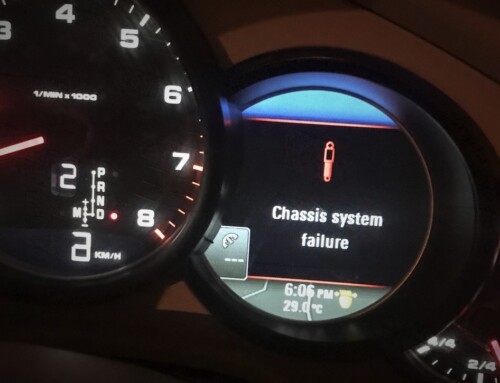 ymptoms: Chassis System Failure Message, Uneven Ride Height, PASM Fault
ymptoms: Chassis System Failure Message, Uneven Ride Height, PASM Fault
This fault becomes evident on your Macan dashboard when a malfunction occurs in the air-ride suspension system. The system has a number of components, but generally, only one failure indicator. Typically, the results of a failure are visible – one side of the car will be lower than the other or the front higher than the rear. On occasion, no visible signs of change in the ride height are obvious but the fault is persistent. In colder climates, the fault can be sporadic initially, based on air temperature.
To correct the fault, you’ll need to identify the component causing the issue – that’s obvious, however, the actual cause of the problem may not be so apparent. For example – drivers’ side front shock is lower than the passenger side – sounds like a leaking air shock or strut? Maybe, but it could also be a ride height sensor, leaking hose, faulty valve block or bad electrical connector!
Diagnosing Air Ride Suspension on a Macan
Components and Common Failures
Air compressor
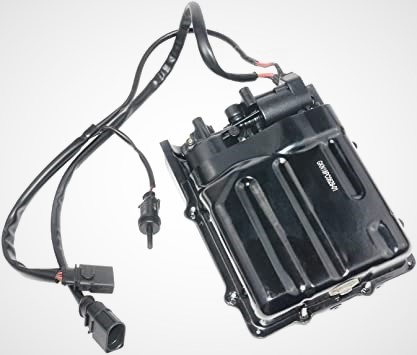 The air compressor supplies the system with compressed air. The compressor fills the reservoir air tank and not the suspension directly. The compressor is designed to run in short bursts to top off the tank.
The air compressor supplies the system with compressed air. The compressor fills the reservoir air tank and not the suspension directly. The compressor is designed to run in short bursts to top off the tank.
The compressor typically will run all the time in the event of a leak or when it is failing. Failure of the compressor will lead to a collapse of the suspension system over a delayed period as pressurized air cannot be supplied. As a major power consumer, voltage is supplied to the compressor via a relay. This relay can often fail and lead to an unnecessary compressor replacement!
Air tank
The air supply tank is the least likely area of failure. This simply stores the compressed air to enable enough volume to be delivered quickly to correct the vehicle ride height. The tank supplies air to the system via the valve block – a hole in the line from the tank to the valve block will cause a system wide failure.
Valve Block
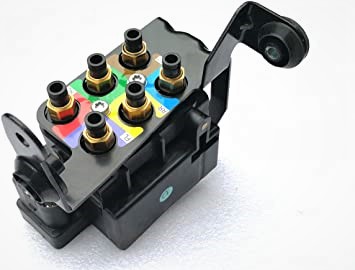 Compressed air is supplied to the valve block from the air tank. The valve block is an electro-mechanical device that routes pressurized air to the individual system components per instructions sent from the control module. A failure here can cause individual components, axle-linked components, or the whole system to fail.
Compressed air is supplied to the valve block from the air tank. The valve block is an electro-mechanical device that routes pressurized air to the individual system components per instructions sent from the control module. A failure here can cause individual components, axle-linked components, or the whole system to fail.
Air lines or hoses
The air hoses travel from the valve block to the individual system components. Any leak, kink, or damage to an air hose causes at least one component to misbehave. Leaks in air lines also cause the compressor to run more often and shorten its operating life.
Front Air Shocks or Struts – Rear Air Spring
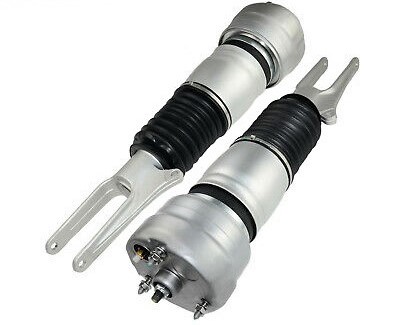 The air ride shock, strut or spring is filled or indeed emptied of compressed air via the air hose and valve block. Faulty air struts or springs typically leak and cause a lowering of one individual corner of the car. Two failing at the same time is unusual, so if you have a lower than normal ride height across one axle, do not assume leaking struts – see level sensors below. Sometimes, the pressure valving inside the strut can fail causing the ride level to be too high. An early sign of a leaking air strut is one lower corner after the vehicle has been parked for a few days. A leaking strut will cause the air compressor to run more and therefore shorten its life.
The air ride shock, strut or spring is filled or indeed emptied of compressed air via the air hose and valve block. Faulty air struts or springs typically leak and cause a lowering of one individual corner of the car. Two failing at the same time is unusual, so if you have a lower than normal ride height across one axle, do not assume leaking struts – see level sensors below. Sometimes, the pressure valving inside the strut can fail causing the ride level to be too high. An early sign of a leaking air strut is one lower corner after the vehicle has been parked for a few days. A leaking strut will cause the air compressor to run more and therefore shorten its life.
Electrical connectors
Each of the suspension components has an electrical connector. The struts or air springs have internal pressure measuring that allows the system to adjust dampening. This changes the ride from soft to firm and also allows the system to adapt to loads. this is also the basis of the PASM system to enable ride changes from sport to comfort.
The electrical connectors can become corroded or greened in some circumstances. This causes the system to report malfunctions but typically does not affect ride height. Ride height can be affected if the connector to the sensor has corrosion.
Ride Height Level sensors
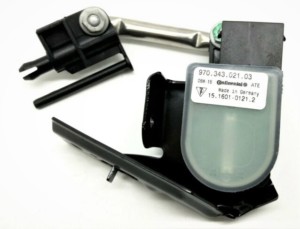 The ride height sensor is a small electro-mechanical component that connects the suspension to the body of the car. A small plastic arm translates vertical vehicle movement into rotational movement in the sensor. Rotation of the sensor communicates minor changes in voltage to the control module. Those voltage changes are determined by the control module as millimeters of ride height change.
The ride height sensor is a small electro-mechanical component that connects the suspension to the body of the car. A small plastic arm translates vertical vehicle movement into rotational movement in the sensor. Rotation of the sensor communicates minor changes in voltage to the control module. Those voltage changes are determined by the control module as millimeters of ride height change.
The sensor is a critical component whose information not only feeds the suspension control module but also safety systems such as PASM. Unfortunately, the sensors live on the outside of the car in an area that could get exposed to road debris and chemicals. Failure of these sensitive components is inevitable.
Ride height sensor faults can be fun! A dead sensor is straightforward to diagnose – no signal. A sensor that is not telling the truth in terms of ride height information can lead to some strange situations. Because a ride height signal is still reaching the control module from a faulty sensor, action is taken based on that faulty information. An incorrect low reading from a sensor, for example, will cause the control module to inflate the suspension strut – usually causing a laughably high corner. Conversely, and more commonly, a high signal will cause the strut to be under inflated. This looks like a leak and is commonly mis-diagnosed.
Suspension Control Module
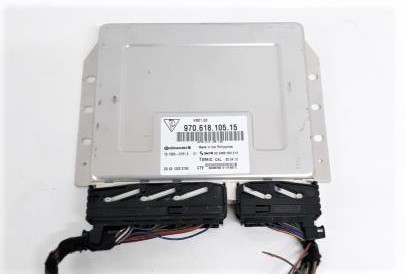 The suspension control module runs the whole system and communicates information to other vehicle systems. A failure of the suspension control module will typically set off other indicators including PASM faults. The control module is one of the least likely items in the system to fail. A typical failure will be a complete shutdown of the suspension. Control module failures rarely cause part system failure.
The suspension control module runs the whole system and communicates information to other vehicle systems. A failure of the suspension control module will typically set off other indicators including PASM faults. The control module is one of the least likely items in the system to fail. A typical failure will be a complete shutdown of the suspension. Control module failures rarely cause part system failure.
Switches
Switch failure is commonly overlooked. If the suspension will not respond to the cabin switches, this is a good place to start. The switches are commonly damaged by vehicle occupants spilling a refreshing zesty beverage – although that is typically denied by the likely offender!
Electronic Power Steering Fault
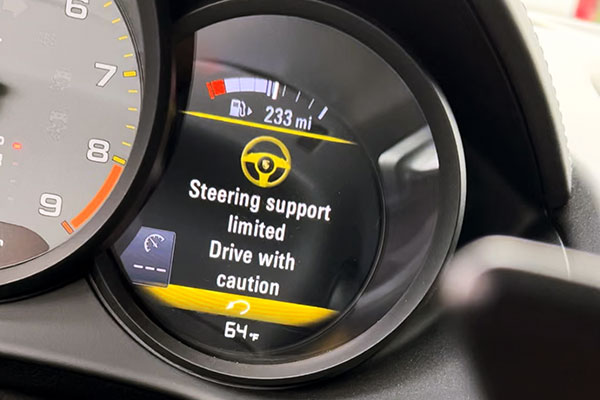 Later Macan models feature electronically assisted power steering. Fault messages associated with the power steering typically indicate a loss of steering assistance or support and suggest you can drive on. This means the steering will feel heavy and requires more effort. This can be a potentially dangerous situation and should be diagnosed as quickly as possible.
Later Macan models feature electronically assisted power steering. Fault messages associated with the power steering typically indicate a loss of steering assistance or support and suggest you can drive on. This means the steering will feel heavy and requires more effort. This can be a potentially dangerous situation and should be diagnosed as quickly as possible.
Failure of the electronic steering rack is not that common. These faults are normally caused by power supply failure through a faulty relay.
Bodywork Exterior and Lighting
LED Headlight Failure
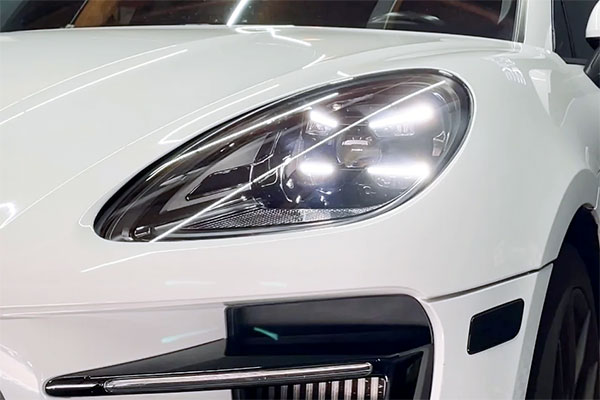 Symptoms: Loss of low beam or partial failure of LED matrix, headlight unit won’t light up, intermittent headlight failure warnings.
Symptoms: Loss of low beam or partial failure of LED matrix, headlight unit won’t light up, intermittent headlight failure warnings.
Back in the good old days, a headlight out warning meant a simple bulb replacement. However, if you have the later matrix style LED headlights on your Macan, this is going to be painful.
If you have a headlight failure or if any part of the headlight unit is not lighting up, your next step is to replace the whole light unit. The LED assembly cannot be serviced or repaired and needs to be replaced. Probably best to sit down before reading the next section!
The units are very expensive to replace. Typically, the work at a dealership is going to cost you north of $2500 for one side! An independent Porsche specialist can probably save you a little on the labor costs, but the part price is pretty fixed.
Passenger Side Mirror Fault
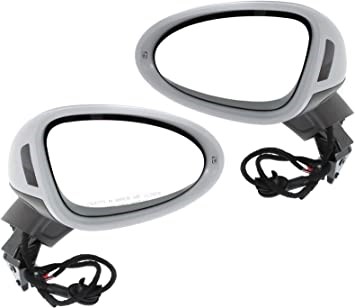 Symptoms: Mirror Moves Up in Reverse Gear
Symptoms: Mirror Moves Up in Reverse Gear
Many Porsche Macan owners have noted that when shifting into reverse gear, the passenger side mirror does not aim downward toward the curb as it is supposed to do.
Instead it turns to aim skyward, providing a wonderful view of passing birds. This of course, makes the driver unable to see along the passenger side of the car when backing up.
Thankfully, Porsche has a software revision that seems to take care of the problem once the appropriate module has been flashed.
Tailgate Issues
 The Porsche Macan has an electric tailgate with self closing and self opening features. The tailgate can be configured for the height of opening and can be operated from an exterior handle, cabin switch in the driver’s door, the key fob, and a close button on tailgate edge. It features a soft close via an electronic latch that pulls the tailgate closed.
The Porsche Macan has an electric tailgate with self closing and self opening features. The tailgate can be configured for the height of opening and can be operated from an exterior handle, cabin switch in the driver’s door, the key fob, and a close button on tailgate edge. It features a soft close via an electronic latch that pulls the tailgate closed.
The tailgate has a reputation of being finicky and can experience a number of issues:
- Stops mid-close or mid-open – tailgate reverses, beeps
- Doesn’t open to saved height – only opens halfway despite memory set
- Won’t latch fully – closes but warning shows tailgate open
- Rattles or clicks when driving – noise from rear hatch area
- Slow to respond in cold weather – moves sluggishly or stops
Many of these issues have been addressed with revised parts such as the motor assembly, latch assembly, and struts. In some circumstances the operation of the tailgate needs to be recalibrated using the PIWIS.
Still Can’t Find An Answer? – Contact Us For More Help
If your Macan has mechanical issues that don’t appear here, simply drop us an email via the forms or pop-up contact and we’ll do our best to share a solution with you.

